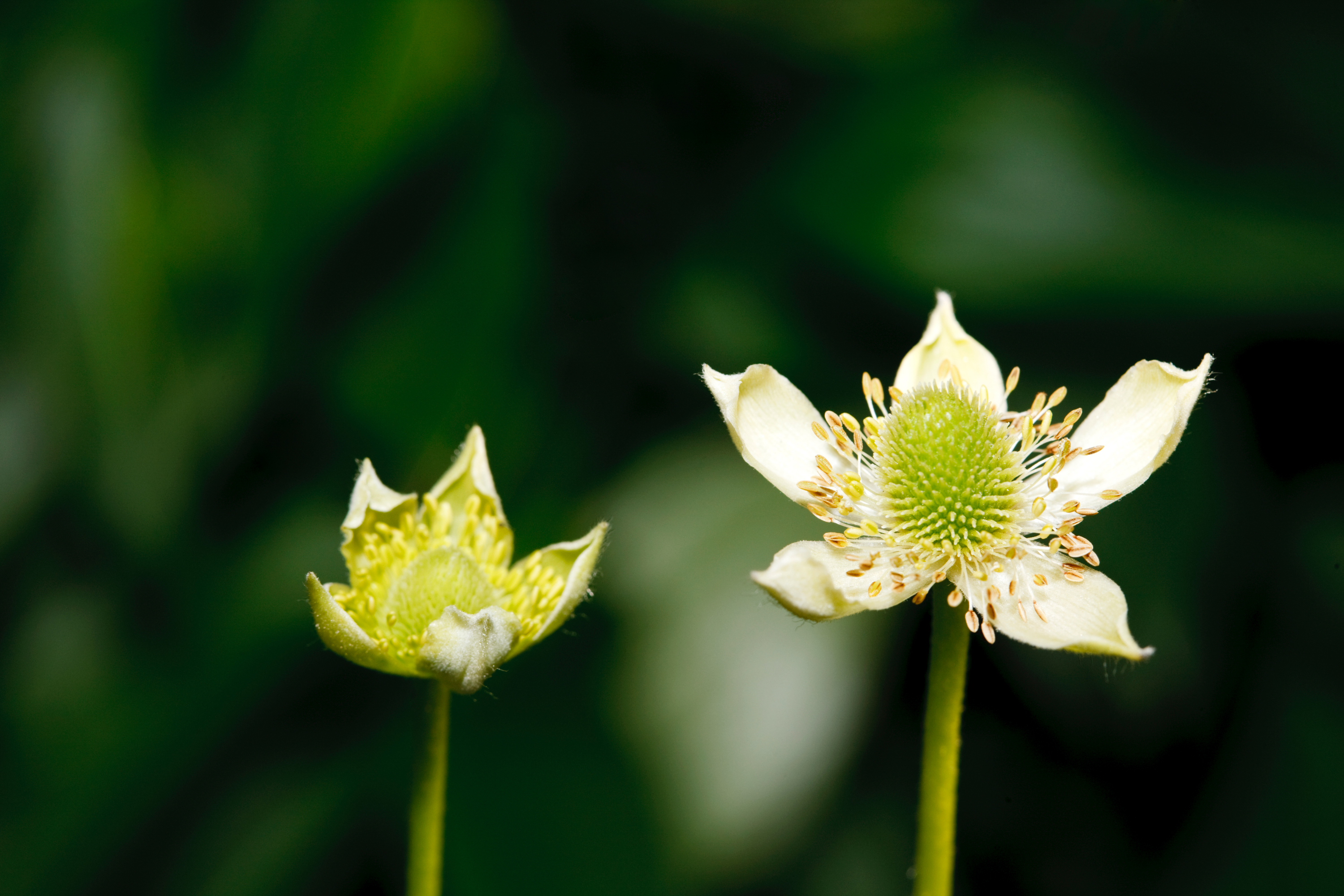Candle Anemone
(Anemone cylindrica)

Description
Anemone cylindrica is an upright growing, clump forming herbaceous flowering plant species in the buttercup family Ranunculaceae. Plants grow 30–100 centimetres (12–39 in) tall, flowering early summer but often found flowering till late summer, the flowers are greenish-white. After flowering, the fruits are produced in a dense rounded columned spikes 20–35 millimetres (0.79–1.38 in) long. When the fruits, called achenes, are ripe they have gray-white colored, densely woolly styles, that allow them to blow away in the wind. Anemone cylindrica is native to north central North America where it can be found growing in prairies, in dry open woods, along roadsides and in pastures. Anemone cylindrica is one of several plants known as thimbleweed. Anemone is a genus of flowering plants in the buttercup family Ranunculaceae. Plants of the genus are commonly called windflowers. They are native to the temperate and subtropical regions of all continents except Australia, New Zealand and Antarctica. The genus is closely related to several other genera including Anemonoides, Anemonastrum, Hepatica, and Pulsatilla. Some botanists include these genera within Anemone. Anemone are perennials that have basal leaves with long leaf-stems that can be upright or prostrate. Leaves are simple or compound with lobed, parted, or undivided leaf blades. The leaf margins are toothed or entire. Flowers with 4–27 sepals are produced singly, in cymes of 2–9 flowers, or in umbels, above a cluster of leaf- or sepal-like bracts. Sepals may be any color. The pistils have one ovule. The flowers have nectaries, but petals are missing in the majority of species. The fruits are ovoid to obovoid shaped achenes that are collected together in a tight cluster, ending variously lengthened stalks; though many species have sessile clusters terminating the stems. The achenes are beaked and some species have feathery hairs attached to them. Anemone was named by Carl Linnaeus in 1753 and is situated in the tribe Anemoneae, subfamily Ranunculoideae, and the family Ranunculaceae. As considered in the broader sense (sensu lato) the genus is sometimes considered to include a number of other genera, such as Anemonoides, Anemonastrum, Hepatica, Pulsatilla, Knowltonia, Barneoudia, and Oreithales. Several of these were included as separate genera within Anemoneae by Wang et al., a tribe with six genera in total.
Taxonomic tree:







